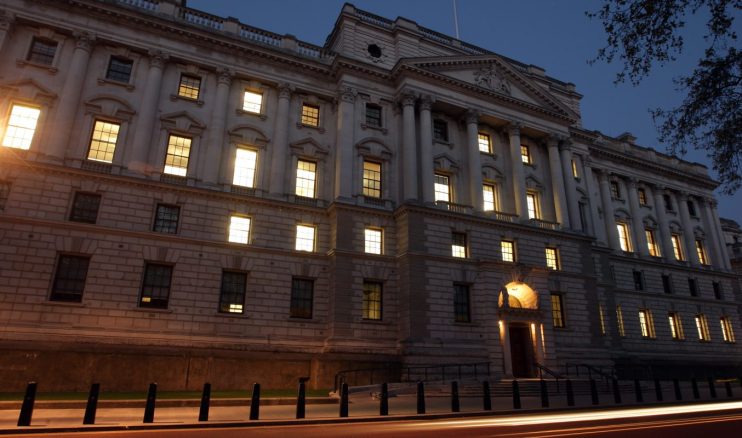Government borrowing ahead of expectations in blow for hopes of tax cuts

New figures have shown that government borrowing across the 2024 financial year came in ahead of official expectations in a blow to the Chancellor’s hopes of cutting taxes again before the election.
According to figures from the Office for National Statistics (ONS), the government borrowed a total of £120.7bn in the 2024 financial year.
While this was £7.6bn less than last year and around a third of what was borrowed during the pandemic, it was still £6.6bn more than the Office for Budget Responsibility’s (OBR) March forecasts.
Government borrowing made up 4.4 per cent of UK GDP across the year, 0.6 percentage points lower than last year but more than the 3.0 per cent deficit averaged in the five years before the pandemic.
Commenting on government finances in the previous year, ONS deputy director for public sector finances Jessica Barnaby said: “Spending was up about £58bn, with increased spending on public services and benefits outstripping large reductions in interest payable and energy support scheme costs. But with public sector income up £66bn, overall, the deficit still fell”.
The annual figures came after government borrowing in the month of March came in at £11.9bn, comfortably ahead of the £10bn expected by economists.
Economists closely watch the borrowing figures for any indications of how much fiscal space the Conservatives will have to cut taxes ahead of an election later this year.
Ruth Gregory, deputy chief UK economist at Capital Economics, said the figures cast “further doubt on the ability of the government to unveil big tax cuts at another pre-election fiscal event.”
In recent weeks markets have also pared bets on how many times the Bank of England will cut interest rates, which could put up the cost of servicing government debt in the months to come.
This will make it more difficult for Jeremy Hunt to cut taxes while still meeting his key fiscal rule. Hunt has said the Conservatives will cut taxes again in the autumn “if we can“, with some reports suggesting he’s considering another 2p cut to National Insurance.
The Chancellor has cut National Insurance by 2p at the last two fiscal events, but the tax burden is still expected to rise to 37.1 per cent of GDP in 2028-29, four percentage points higher than pre-pandemic.
Public sector net debt was estimated at 98.3 per cent of GDP, 2.6 percentage points higher than a year ago.
“Debt increased in recent years because we rightly protected millions of jobs during Covid and paid half of people’s energy bills after Putin’s invasion of Ukraine sent bills skyrocketing,” a Treasury spokesperson said.
“We can’t leave future generations to pick up the tab, so we must stick to the plan to get debt falling,” they continued.